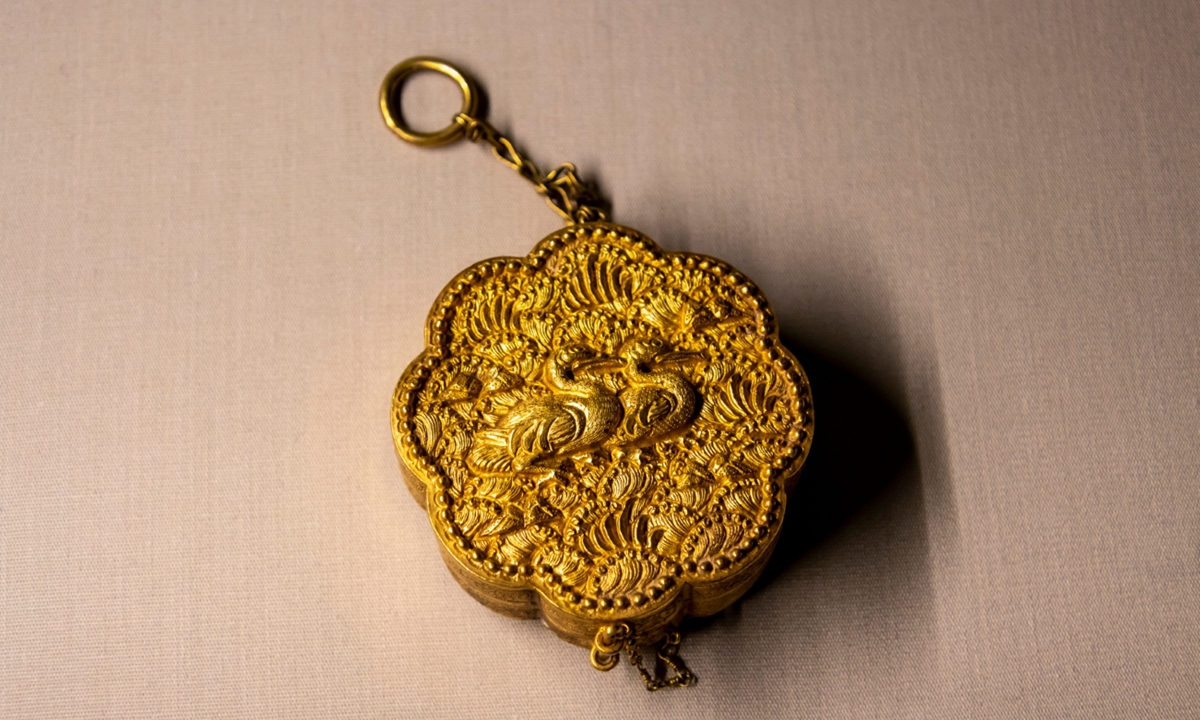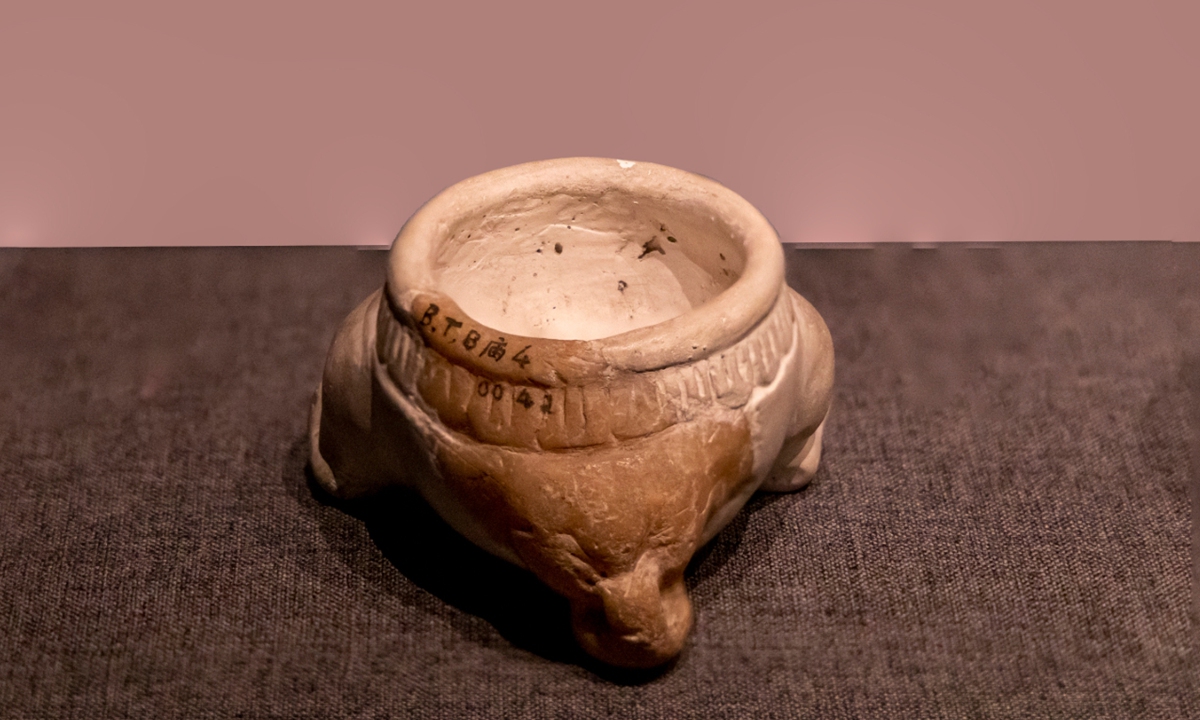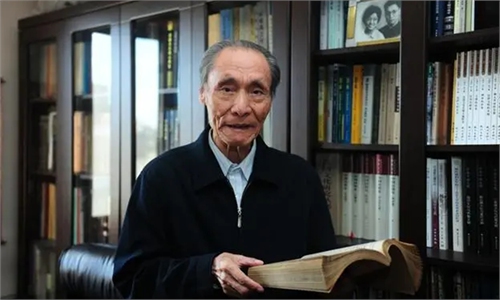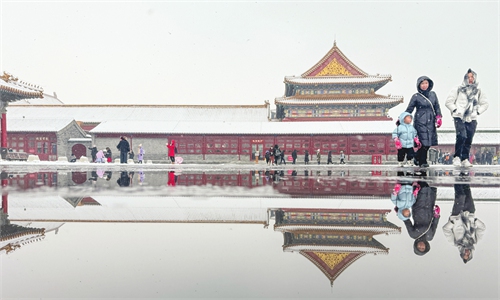ARTS / CULTURE & LEISURE
Half-decade-long frontier archaeology yields major discoveries, reveals diverse yet united Chinese civilization
A step forward

The Tongtiandong site in Northwest China's Xinjiang Uygur Autonomous Region Photo: VCG
Including the Paleolithic Tongtiandong site in Northwest China's Xinjiang Uygur Autonomous Region, nearly 80 archaeological projects were impressively executed in Xinjiang between 2019 and 2023.The archaeological projects in Xinjiang, along with other discoveries made in North China's Inner Mongolia Autonomous Region, Southwest China's Yunnan Province, and other parts of the country, have contributed greatly to the enrichment of the current research landscape of China's frontier archaeology as witnessed over the last five years.

A golden box unearthed from a Liao Dynasty (916-1125) tomb in Tongliao, Inner Mongolia Autonomous Region Photo: VCG
Unique valueWith an aim to facilitate discussions about future topics in Chinese archaeology, and the field of "frontier archaeology" in particular, the 5th China Frontier Archaeology Symposium was recently held in Beijing.
Several archaeological sites addressing research questions such as "ethnic cultural diversity" and the "ancient Silk Road cultural exchanges" were highlighted at the event, of which frontier archaeologist Chen Hurong told the Global Times that such subjects "reflect the unique value of frontier archaeology."
"Compared with many inland archaeological projects, frontier histories can often vividly depict ancient China's exchanges with other cultures," Chen said. The expert also noted that aside from China's Xinjiang and Xizang autonomous regions, northern China is also the "birthplace" of many frontier sites.
Located in Chifeng, Inner Mongolia, the Caitao Po site was first excavated by archaeologists in 2022. The site is one of the most iconic frontier archaeological ruins that represent China's Neolithic Hongshan culture, rooted in the West Liaohe River Basin.
After a year-long on-site research, a 6,000-year-old dragon sculpture made of mussel shells was unearthed. Archaeologist Wang Meng told the Global Time that the discovery reveals ancient Chinese people's cultural belief in the "dragon" totem.
Also located in northern China, a subject under China's national-level research project "Archaeology of China," was launched in 2021 to focus on the ancient human sites around the Changbai Mountain, Jilin Province. The research focuses on the trade exchanges and cultural migration of ancient people in the Northeast Asian region and has also revealed their survival strategies.
Chen told the Global Times that the archaeological history of Jilin was also known for its "enriched ethnic civilizations."
"Ancient human beings' activities in the province can also embody the diversity of Chinese ethnic cultures," Chen said.

A Northern Dynasties (386-581) pottery stove unearthed from the Tuokuzisalai site in Xinjiang Uygur Autonomous Region Photo: VCG
Wider spectrumExtending the Chinese frontier archaeological landscape to Southwest China's Xizang Autonomous Region, more than 10 research sites have been investigated in the last five years including the Nwya Devu and Sang Kar Gang sites.
Findings at the Nwya Devu site revealed that early modern humans, with leaf-shaped stone tool technology, were active in the central plateau around 40,000 years ago. In 2023, the Institute of Tibetan Plateau Research (ITP) under the Chinese Academy of Sciences, conducted a systematic excavation of the Sang Kar Gang site near Lhasa. Over 1,000 stone artifacts were unearthed, providing crucial materials for the understanding of the earliest human migration into the central Qinghai-Tibet Plateau, their routes, and survival strategies.
Li Hao, a researcher with the project and research fellow at the ITP, told the Global Times that differences between archaeology in Xizang and inland archaeology primarily stem from Xizang's unique climatic conditions.
"Exploring the process of early human adaptation to the plateau is also crucial to gaining a comprehensive and in-depth understanding of the formation and evolution of modern populations in Xizang," he said, adding that in terms of research methods, sedimentary ancient DNA methods are expected to play an increasingly important role in future plateau Old Stone Age archaeology, mainly due to the favorable preservation conditions for ancient DNA in the cold environment.
As a "hot destination" in China's frontier archaeology, Xinjiang boasts several sites such as the Tuokuzisalai site in Bachu county, that have been hives of activity over the last five years. Those sites depicted the thriving exchanges on the ancient Silk Road.
Tuokuzisalai is a comprehensive archaeological site that includes the remains of an ancient capital and two Buddhist temples. The site has a history dating back to the Han (206BC-AD220) and Tang (618-907) dynasties. It has witnessed the cultural exchanges between the Western Region and the Central Plains along the ancient Silk Road.
With the modern growth of China, the archaeological spirit of the ancient Silk Road has been extended into the present day. Many cross-cultural frontier archaeological projects conducive to the China-proposed Belt and Road Initiative (BRI) have been launched. China's collaborations in the field of archeology with BRI participation countries extend beyond nearby Central Asian partners like Uzbekistan, to European partners like France.
In June 2023, a human distal phalanx fossil was discovered in Dordogne Province, France. The discovery was made through joint efforts by both Chinese and French researchers. Luc Doyon, the lead researcher of the China-France discovery, told the Global Times that this joint research carried out by these teams is also of "significant importance to our understanding of humanity."
"Our frontier archaeology is also not solely for the purpose of just understanding Chinese culture and history; it is dedicated to understanding how China related to the world in ancient times," Chen told the Global Times.



